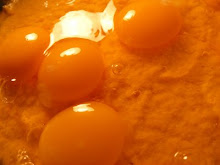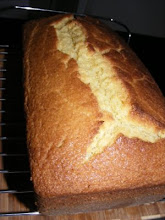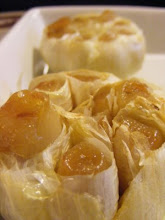










Some of these photos are blurry. At the time of shooting, I had been into the "Christmas Cheer" and while looking through the lens of the camera, I wasn't sure whether it was the camera or myself that was out of focus. It appears that it was the camera! So...I have included the blurry shots not only to illustrate the process of making this dressing, but also to illustrate the dangers of celebrating too much while on the job.
This stuffing was for myself, so I wasn't actually "on the job" at all. This was the accompaniment to the chicken dinner I made for Christmas. It is a dressing made outside of the bird. I am in the habit of making dressings this way because it isn't completely safe to dress a bird, and cooking in restaurants serving customers requires the safest practices possible in order to minimize the risk of food poisoning. It isn't a pleasant subject, but it is a reality.
This is a basic sage dressing made from cubed bread, herbs, aromatics, stock, butter and seasonings. It is made in a pan and baked in foil until done. It is very simple and could be baked in a pot. However, I like to bake it this way because it looks nice when sliced presented on the plate.
Sage Dressing
1. Allow 2 loaves of sliced white bread to dry for a few hours by unwrapping it and leaving it out in open air. After about 4 - 6 hours, cube the bread into 1/2 inch cubes into a large pan.
2. Prepare the aromatics for the dressing by finely chopping celery, onion and shallots and sweating them in butter. How much you say? Well...I like to have 1/2 the volume of the bread cubes in aromatics. I like to use 1/2 of that volume in onions/shallots and the remaining 1/2 of that volume in celery. Sweat it all off in about 1 pound of butter until translucent.
3. Spread the cooked aromatics over the cubed bread. Drizzle the melted butter over the bread evenly and stir everything together until evenly mixed.
4. Drizzle cold stock over the bread while stirring. Once the bread clumps together easily that is enough stock. The bread should not be wet or soggy...just moist.
5. Season this mixture with salt and pepper. Add chopped sage, parsley and rosemary. Mix one more time thoroughly.
6. Distribute this mixture down the center of 2 large lengths of foil wrap as in the photo. Roll and wrap into 2 sausage-shaped rolls and twist the ends to seal.
7. Bake at 350 for an hour to an hour and fifteen minutes. Serve while hot.



























































































































